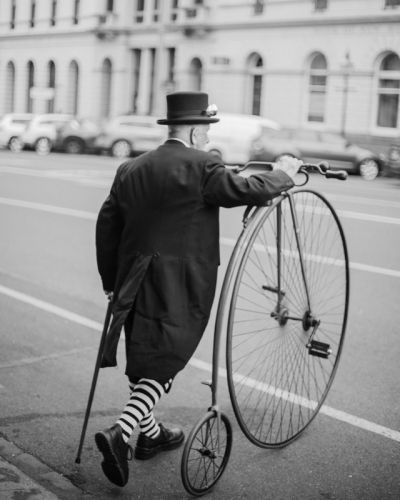A version of this article ran in the October 2022 issue of Bicycle Retailer & Industry News.
For at least one social media news cycle last summer, e-bike fans took to their keyboards in disgust when TheAtlantic.com published “The E-bike Is a Monstrosity” by Ian Bogost.
The essay’s venue may have contributed to the outrage. Founded in 1850 by literary icons including Ralph Waldo Emerson and Henry Wadsworth Longfellow — the new media superstars of that age — The Atlantic remains a home to good writing. Perhaps the critics were more upset to see Bogust's take there than if it had appeared in a random Medium post (Social media critics find "mainstream media" irrelevant until it fails to confirm their opinions).
Bogost’s largely negative take on e-bikes went unappreciated, and critics mocked his struggle to find the e-bike’s proper place in our culture, our transportation system, and his personal identity.
Bogost, intentionally or not, took some of the tone and themes of an essay by frequent Atlantic contributor Mark Twain. Twain wrote “Taming the Bicycle” in 1886 and described — with his trademark humorous exaggeration — trying to ride the high-wheel bikes of the day. It was published posthumously in 1917.
“I thought the matter over and concluded I could do it,” Twain began. “So I went down and bought a barrel of Pond’s Extract and a bicycle.”
Bogost embarked similarly. “I’d like to drive less, exercise more, commune with nature, and hate myself with a lesser intensity because I am driving less, exercising more, and communing with nature,” he began. “One way to accomplish all of these goals, I decided earlier this year, was to procure an e-bike.”
Twain hilariously reported on the bicycle’s damage to his body and pride. Dismounting from a high-wheeler was especially undignified.
“Try as you may, you don't get down as you would from a horse,” he wrote. “You get down as you would from a house afire. You make a spectacle of yourself every time.”
And in a breathless 108-word sentence, Twain reported on the challenge of cornering.
“Your confidence oozes away, you fill steadily up with nameless apprehensions, every fiber of you is tense with a watchful strain, you start a cautious and gradual curve, but your squirmy nerves are all full of electric anxieties, so the curve is quickly demoralized into a jerky and perilous zigzag; then suddenly the nickel-clad horse takes the bit in its mouth and goes slanting for the curbstone, defying all prayers and all your powers to change its mind — your heart stands still, your breath hangs fire, your legs forget to work, straight on you go, and there are but a couple of feet between you and the curb now.”
More succinctly, Bogost reported on how a motor changes bike cornering.
“Having a motor changes a lot of things about a bike. Anytime you pedal with the motor engaged, it will push you forward more than you’ve pedaled. I thought I’d acclimate to it, but I still haven’t; especially when pedaling from a coast out of a turn, I forget the motor is in gear, and when it engages it sends me off course, flying into the curb (or worse, into traffic).”
Bogost wisely made little attempt to match Twain’s humor, although his dry self-deprecating tone may have been overlooked by irate e-bike supporters. But Bogost's essay went a step past Twain in at least attempting to view the e-bike from a wider perspective.
“Vehicles have symbolic value, like it or not,” he wrote, in one of his column's most derided paragraphs. “Cars denote freedom; commuter bikes imply, for better or worse, jerkitude or tweeness; motorcycles are cool; e-scooters are for douchebros. But e-bikes bear no clear character. They fall between the cracks. Even when I willingly tell people, 'Oh, I got an e-bike,' I’m not sure if I’m bragging or revealing shame. 'Mmm, wow,' they respond, before changing the subject to something more interesting, such as the weather.”
Twain's essay didn’t foresee the bicycle’s impact on society in his essay, and by the time he died in 1910 the bike and the horse were rapidly being replaced by the automobile.
The bicycle survived Twain’s posthumous hot take, and we feel certain that the e-bike will survive Bogost’s. In a few decades, more of us might even appreciate the humor.
Related: Outside Online's take on Bogost's article: The E-Bike is Pure Joy




